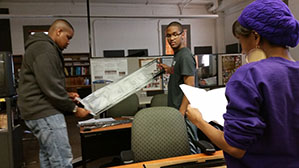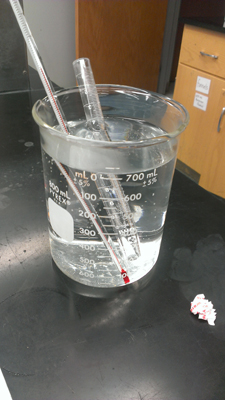

| Home | Resume | Professional Statement | Research | Links |
|---|
Documentation of Site Preparation for Installation of SeaSpace Ground Stations at ECSU
Team Members: Jefferson Ridgeway, Tori Wilbon, Nigel Pugh Spring 2015Mentors: Andrew Brumfield, Michael Osterhouse Keywords- SeaSpace, TREX, TeraScan, CentOS, Visualization Stations, TeraVault, Monitoring Systems, GOES In September 2014, a transition was made to a direct purchase and installation of Seaspace hardware and software. The installation of the Seaspace hardware included: 15 Visualization stations, 2 monitoring systems, a Teravault raw storage device, and a TeraScan Rapid Environmental X-treme (TREX) high-powered processor. The installation of the Seaspace software on the 15 Visualization stations included: an updated version of TeraScan, which includes the Graphical User Interfaces TeraVision and TeraMaster, and CentOs, which is a Linux-based Operating System. Also two 5.0m L band systems were installed on Dixon-Patterson hall in the summer of 2012. The purpose of this project was to document the installation requirements and internal processes at ECSU for Seaspace Hardware and Software Equipment, with also addressing; the location of engineering findings, location of installation requirements, repositioning and securing current ground stations, and proper training center needs. URL:http://nia.ecsu.edu/ur/1415/teams/terascan/Homepage.html A Project Management Framework for Cloud and HPC Resource ProvidersTeam Members: Jefferson Ridgeway, Ifeanyi Rowland Onyenweaku Summer 2014Project Leaders: Gregor von Laszewski, Fugang Wang Keywords- Cloudmesh, Project Management, User Management, Project Review Management, FutureGrid, MongoDB, Django Cloudmesh is a project that allows the management of virtual machines in a federated fashion. It can be run in two modes. One is a standalone mode where the users run cloudmesh on the local machines. The second mode is a hosted mode where multiple users share a web server through which the virtual machines are managed. One of the important functions for cloudmesh is to provide a sophisticated user management. This user management is currently conducted in drupal through the FutureGrid portal via an integration to the FutureGrid LDAP server. However, as the rest of cloudmesh is developed in python, the user management in FutureGrid has had some limitations. It is important to identify a python based solution with more advanced features in order to re-implement the user management functionality in cloudmesh to address long term sustainability of the user management component. URL: https://github.com/cloudmesh/management Update of the CERSER TeraScan Cataloguing System TeraScan Image Processing Scripts
Mentor: Jeff Wood Keywords- GOES, TeraScan, ImageMagick, Macintosh OSX, MySQL, PHP, Remote Sensing The Center of Excellence in Remote Sensing Education and Research (CERSER) on the campus of Elizabeth City State University is currently tasked with the responsibility of receiving remotely sensed data from orbiting National Oceanic and Atmospheric Administration (NOAA) Polar Operational Environmental Satellites (POES) and the Geostationary Operational Environmental Satellites (GOES). This data is collected by SeaSpace TeraScan systems installed in the CERSER labs in Dixon-Patterson Hall. In 2005, the processing system underwent a major update due to a migration to a new operating system. A minor update was needed at this time to deal with a second operating system migration and display of the processed images on the CERSER web site. Since then, a second transfer to a new server was made in 2013. The cataloguing system went down at this time and was not repaired due to technical issues with the TeraScan system. The 2014 team corrected issues within the current server directory system and updated the data script to process images from the GOES-13 satellite received by the TeraScan system. Software and languages utilized for this task included ImageMagick, PHP, HTML, Dreamweaver, phpMyAdmin, and MySQL. Along with this operating system update, a major script development was needed on the TeraScan processing equipment due to an upgrade in hardware. The ground station upgrades included a 3.7m X/L band, a 3.6m C band, and a 5.0m L band dishes, along with accompanying computing hardware. This new script processes both infrared and visible light images received from the GOES-13 satellite into the Tagged Image File (TIFF) Format. URL: http://nia.ecsu.edu/ur/1314/teams/mmt/ Analyzing Charles's Law and Avogadro's Law
|
||||
|
||||

 Team Members: Brianna Williams, Bria Lynch
Team Members: Brianna Williams, Bria Lynch